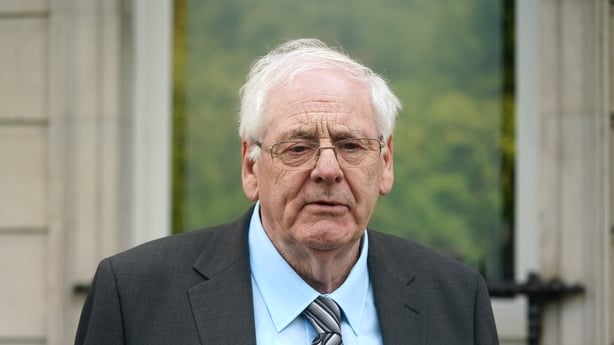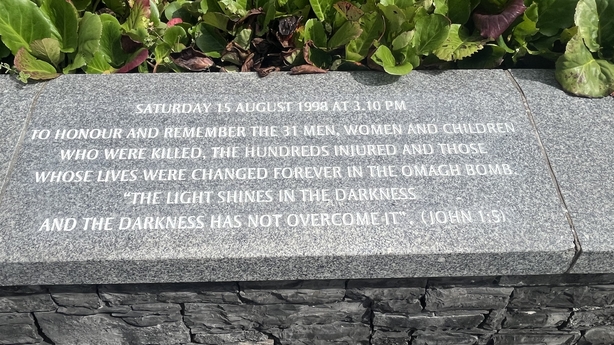Michael Gallagher found his 21-year-old son Aiden's work coat hanging in the car repair shop they shared when he finally went back after the bombing that took his beloved boy.
He knew at that moment, he says, that he had to dedicate his life to the pursuit of justice.
Mr Gallagher and his family paid a heavy price for that decision.
However, he always sensed there was something about the atrocity that did not make sense.
He talks about a "drip feed of allegation and innuendo" which he hopes will finally be untangled by the public inquiry which started in earnest today.

Twenty-nine people, including a woman pregnant with twins, were murdered on 15 August 1998.
It was the biggest loss of life in a single attack in the 30 years of violence that convulsed Northern Ireland.
Men, women, teenagers, children and two unborn babies were murdered in the Real IRA bombing, as dissident republicans tried to wreck the embryonic peace process brought to life by the Good Friday Agreement.
They came from Omagh and around it. From Buncrana in Co Donegal, three children on a day trip, and from Spain, an exchange student and a teacher, part of a larger group being hosted by the Donegal families.
220 people were injured, some terribly.
There were two trials. In one the defendant was found not guilty of the murders, in the other a man was convicted but cleared on appeal.
The case against a third individual collapsed before it came to court.
There was a civil action which found several people culpable on the balance of probabilities, a lower standard of proof than that required for a criminal conviction.
Several of those believed to have been involved are now dead, and the prospect of seeing people in the dock diminishes with every passing year.

The first demands for a public inquiry were in 2002, four years after the bombing.
The families had withdrawn their support for what they believed was a flawed police investigation and began agitating for one in the hope it would provide the answers they felt were being withheld.
In the intervening years, the campaigners have met multiple taoisigh and British prime ministers.
There have been many kind and consoling words but no actual action.
In 2013, the British government announced it would not be holding a public inquiry.
It took ten years for another Conservative administration to U-turn on that decision and announce one would be conducted and that would probably not have happened had the families not gone to the courts to force the issue.
At its heart, this is a story of personal tragedy, of multiple lives lost, families destroyed, and hundreds terribly injured.
There is the mental trauma of those who are haunted by what they witnessed in Omagh that sunny Saturday.
However, serious questions have also been raised about alleged investigative failings and the nagging sense that the security services had information that could have prevented the bombing.
That is the focus of the Omagh Inquiry which moves into its evidence gathering phase.
It will begin with pen portraits of the victims, an opportunity for families to bring their loved ones back to mind and place them at the heart of this inquiry.
Due to the nature of the bombing - the device was built in the Republic of Ireland, the bombers came from and returned there - there have been demands for a parallel public inquiry in the south.
However, the authorities south of the border have insisted a single inquiry is "optimal" and there will be full cooperation with the one sitting in Omagh.
Michael Gallagher accepts those commitments but will be watching closely to see actions that back up the words, whether intelligence files and key Irish security services witnesses will be produced.
He believes the Omagh bombing was preventable.
It was the last big atrocity of 30 years of violence, a savage dying kick.
If the inquiry findings bear out Mr Gallagher’s belief that it could have been stopped, it will be a very difficult day for the families and a very sobering one for wider society.







